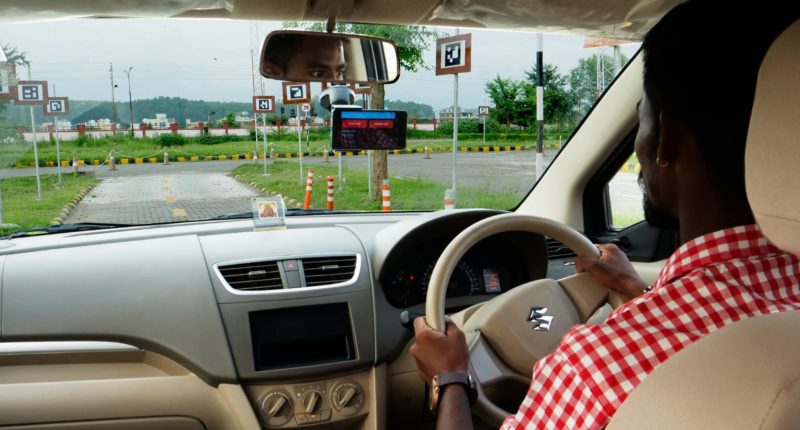In what could possibly a more utilitarian use of AI (among all the other, not-so public stuff that AI is currently being used for), Microsoft Research is apparently putting to test, an automated driving license testing system in India. The pilot is being carried out in the beautiful hill city of Dehradun, in the Uttarakhand state.
The automated tests are currently happening at the Regional Transport Office (RTO) in Dehradun, courtesy of a Microsoft Research Project called HAMS. HAMS, which is short for Harnessing AutoMobiles for Safety, was originally conceived as a system to monitor drivers and their driving, with the aim of improving road safety. Driver training and testing are foundational to this goal, and so the project naturally veered in the direction of helping evaluate drivers during their driving test.
Driver license testing is a pressing problem, specially in India. A survey by SaveLIFE Foundation in India reports that a whopping 59% of the respondents did not give a test to obtain a driving license.
“The main challenge in the traditional driver’s license test is the burden placed on the human evaluators and the resulting subjectivity that a candidate faces. Automation using HAMS technology can not only help relieve evaluators of the burden but also make the process objective and transparent for candidates,” says Venkat Padmanabhan, Deputy Managing Director, Microsoft Research India, who started the HAMS project in 2016.
Padmanabhan developed HAMS along with Akshay Nambi, who joined the project as an intern and is now a Senior Researcher at Microsoft Research India, and Satish Sangameswaran, Principal Program Manager, Microsoft Research India, who helped the team bring HAMS out of the research lab and into the real world through external partnerships.
HAMS, in its general incarnation, uses the smartphone’s front and rear cameras, and other sensors, to monitor the driver (for instance, their gaze) and the road scene in front (for instance, the distance to the vehicle in front), simultaneously. It employs advanced Artificial Intelligence (AI) models, which the team has developed for efficient and robust operation.
For driving tests, HAMS has been customized to include capabilities such as precise tracking of the vehicle’s trajectory during designated test manoeuvres, for instance, parallel parking or negotiating a roundabout. This tracking enables HAMS to determine precisely, for instance, whether the driver stopped in the middle of a manoeuvre for longer than is permitted or tried to course correct by rolling forward and backward alternately more times than allowed.
Today, if you take the driver’s license test at the Dehradun RTO, you will be doing so in just the company of a smartphone affixed to your car’s windshield. HAMS, running on the smartphone and on an edge server onsite at the testing track, will do the rest and produce a detailed report shortly after you finish navigating through the test manoeuvres.
To ensure transparency, in case of a disagreement on the test results, applicants have the option of viewing a video recording of their test drive, to know if the system treated them fairly.





